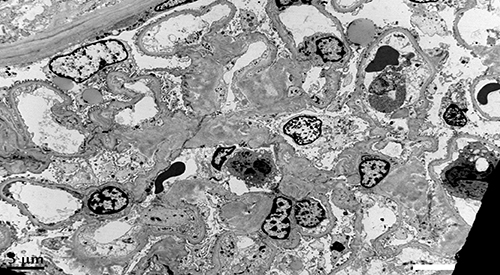Attention A T users. To access the menus on this page please perform the following steps.
1. Please switch auto forms mode to off.
2. Hit enter to expand a main menu option (Health, Benefits, etc).
3. To enter and activate the submenu links, hit the down arrow.
You will now be able to tab or arrow up or down through the submenu options to access/activate the submenu links.
Locator
Contact
Search
VA »
Health Care »
VHA Diagnostic Electron Microscopy Program
VHA Diagnostic Electron Microscopy Program
Goals of the Diagnostic Electron Microscopy Program
The Diagnostic Electron Microscopy Program will provide the optimum standard of care to VA patients with a specialized modality--electron microscopy--for enhancement of diagnosis through study of tissue and cell ultrastructure. Specifically, the program will promote the use of ultrastructural examination to resolve challenging diagnostic problems, encourage and facilitate training in ultrastructural pathology, and foster the development and application of new ultrastructural findings and techniques for patient care. The National Diagnostic EM Program is also responsible for facilitating the sharing of available technical capabilities and diagnostic expertise of designated VA EM laboratories among all laboratories and with other government medical facilities.
Clinical Diagnosis
Quality Assurance
Research and Education
 Clinical Diagnosis
Clinical Diagnosis
- To provide a specialized modality--Electron Microscopy--for enhancement of clinical diagnosis and research through the study of tissue and cell ultrastructure.
- To resolve diagnostic problems which cannot be settled at the light microscopic level.
- To permit the development and rapid exploitation for patient care needs of the new diagnostic findings and techniques which are constantly being found through ultrastructural research.
- To facilitate training of residents, staff physicians, research investigators and selected technical personnel in the use of electron microscopy
Role of Diagnostic Electron Microscopy in
Veterans' Health Care
Electron Microscopy (EM) remains the gold standard for diagnosis of many kidney, muscle, nerve, lung and skin diseases, The value of electron microscopy in difficult diagnostic situations has been demonstrated repeatedly in treatment of Veterans with these diseases. Within the VA network of hospitals there are excellent facilities for Electron Microscopy, staffed by physicians with special expertise in ultrastructural pathology. They work in close coordination with clinicians who use the EM diagnosis along with results of other testing modalities to determine the best course of treatment for the patient. The key stakeholder value in the EM Program for the veteran patient is in obtaining the most appropriate treatment protocol based on the ultrastructural pathology and findings of the case. Conversely, our Veteran patients are the reason for the program to exist.
Benchmarks for Quality in Ultrastructural Pathology
The Diagnostic Electron Microscopy (EM) Program, supported by VACO Pathology and Laboratory Medicine Service and the VHA Employee Education System, organizes a series of webinars annually that are designed to address new findings as well as practice changes in Ultrastructural Pathology/EM that arise as standards of care in Anatomic Pathology evolve. Additionally, the sessions provide updates on best practice criteria for diagnostic histology as correlated with electron microscopy. These virtual meetings feature world-renowned experts in specialized areas of ultrastructural pathology. They present comprehensive lectures on areas as diverse as pathology and pathogenesis of viruses, e.g. Zika, Ebola, and renal transplant pathology. The series is accredited via the Accreditation Council for Continuing Medical Education (ACCME) and ACCME-Non-Physicians (NP).
View the most recent webinar now, The Role of Electron Microscopy in Evaluation of Asbestos-Related Diseases Among US Veterans.































 Quality Assurance
Quality Assurance Research and Education
Research and Education








